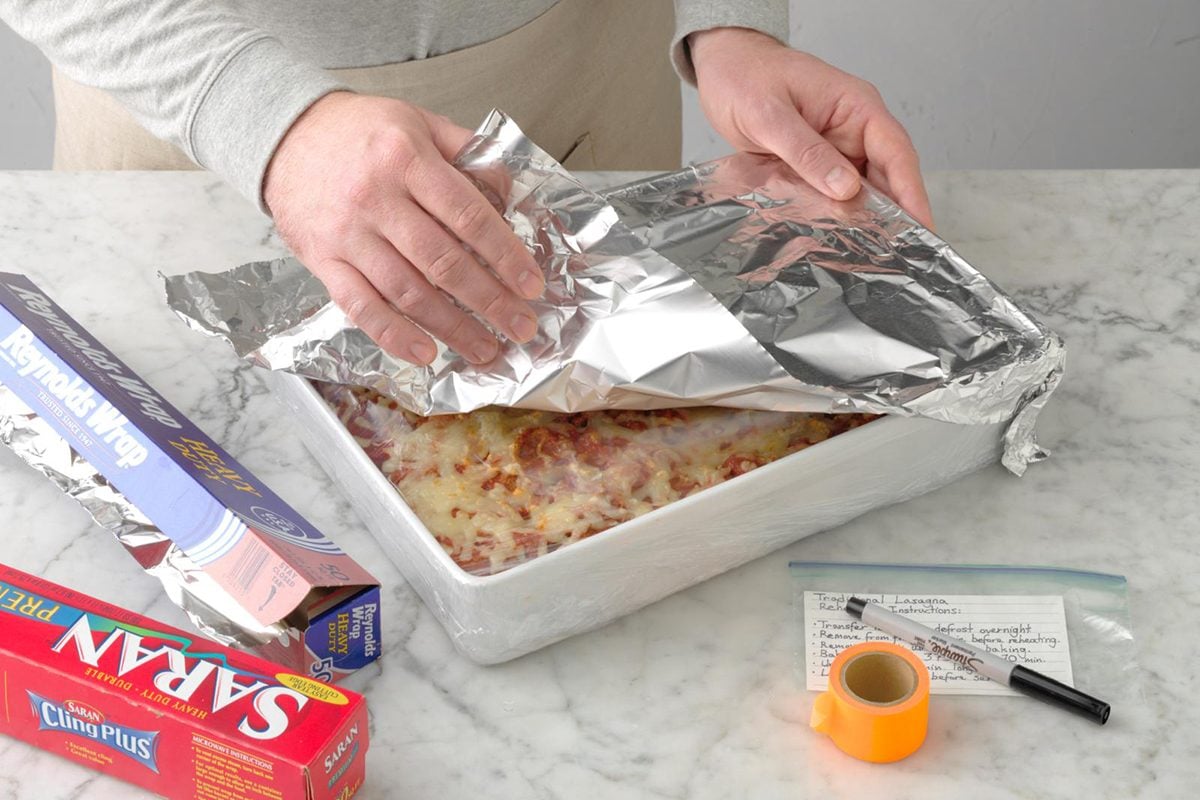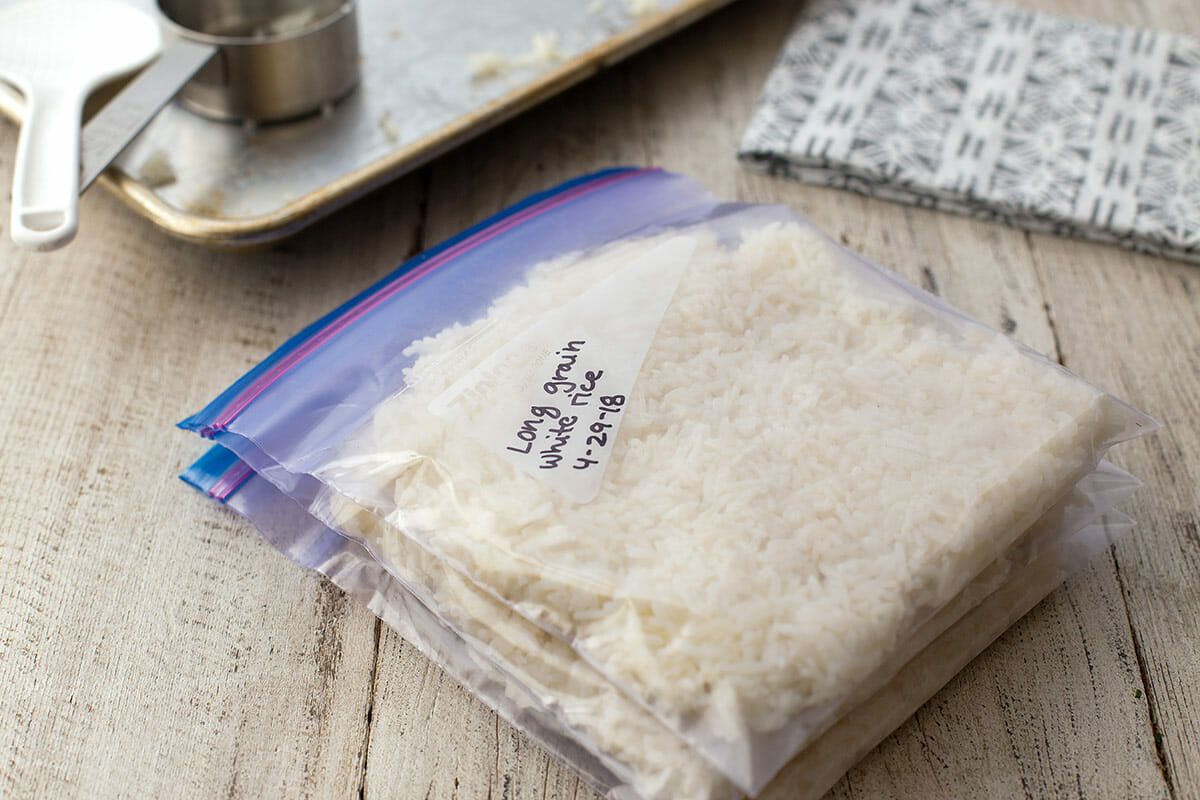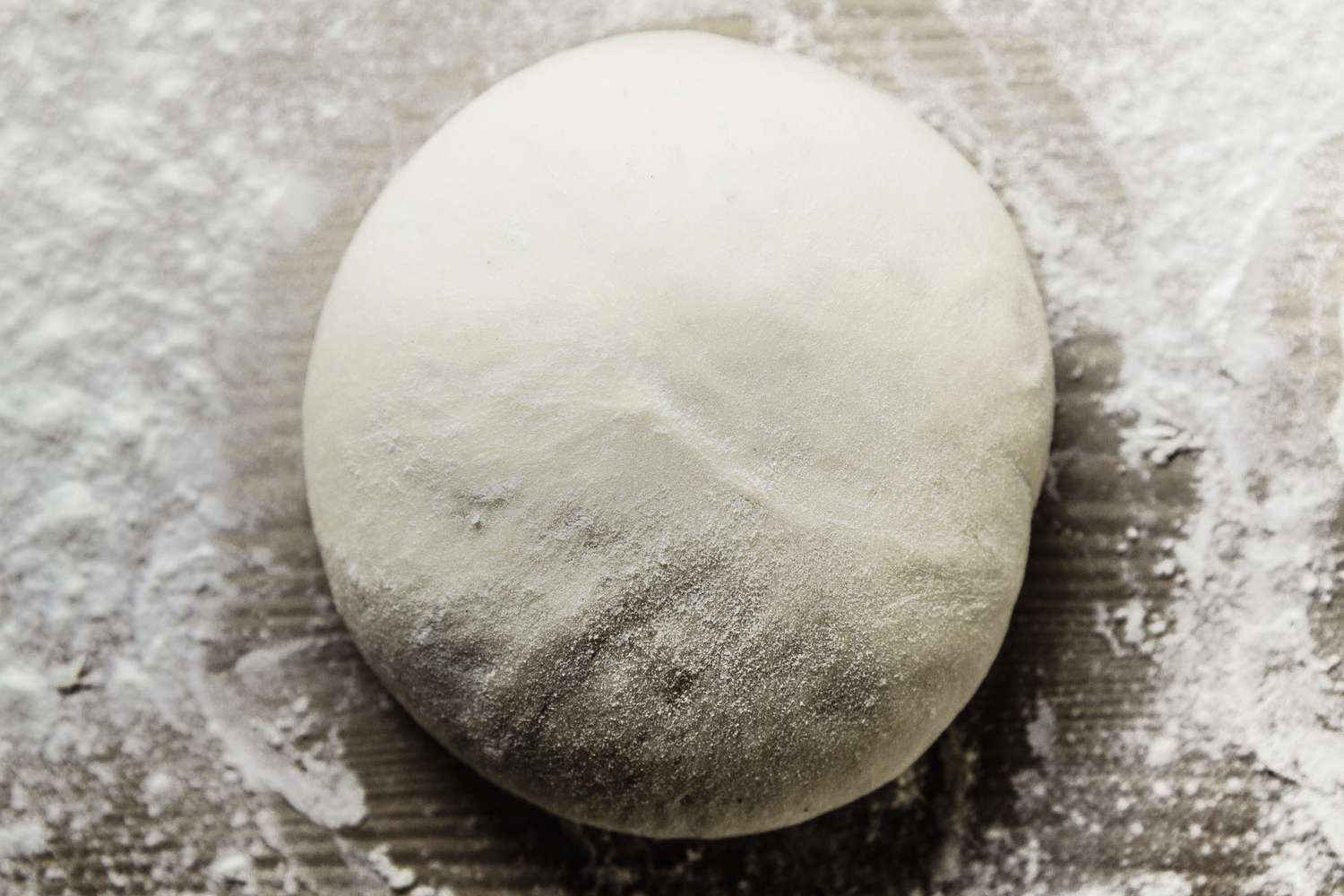

Articles
How Long Does Yogurt Last In The Freezer
Modified: January 18, 2024
Discover expert articles on how long yogurt can last in the freezer, including tips to ensure its quality and freshness.
(Many of the links in this article redirect to a specific reviewed product. Your purchase of these products through affiliate links helps to generate commission for Storables.com, at no extra cost. Learn more)
Introduction
Yogurt is a popular dairy product enjoyed for its creamy texture and tangy flavor. It is not only delicious but also a good source of essential nutrients like protein, calcium, and probiotics. However, sometimes we may find ourselves with more yogurt than we can consume before it spoils. In such situations, freezing yogurt can be a great solution to extend its shelf life and reduce waste.
In this article, we will explore the ins and outs of freezing yogurt. We will discuss why freezing yogurt is beneficial, how it affects the texture and taste, and the recommended methods for storing and thawing frozen yogurt. We will also delve into the evaluation of frozen yogurt’s quality and provide creative ideas for using frozen yogurt in recipes. So, if you’re curious about how long yogurt lasts in the freezer and how to make the most of your frozen stash, read on!
Key Takeaways:
- Freezing yogurt extends its shelf life, but be mindful of texture and taste changes. Use proper containers, follow freezing guidelines, and thaw gradually for optimal enjoyment.
- Get creative with frozen yogurt! Enjoy it as a frozen treat, in smoothies, parfaits, popsicles, or even incorporate it into baked goods and desserts for a tangy twist.
Read more: How Long Does Freezer Jam Last
Understanding Yogurt
Before we dive into freezing yogurt, let’s first understand what yogurt is and why it’s essential to store it properly. Yogurt is a dairy product that is made by fermenting milk with specific bacterial cultures. It has a thick, creamy consistency and a slightly sour taste, resulting from the fermentation process.
There are various types of yogurt available in the market, each with its distinct characteristics. The most common types include Greek yogurt, regular yogurt, and flavored yogurt. Greek yogurt is known for its thicker texture, higher protein content, and lower lactose content. Regular yogurt has a smoother consistency and is typically consumed as is or used as an ingredient in recipes. Flavored yogurts come in a variety of flavors like strawberry, blueberry, and vanilla, offering a delicious twist to the creamy treat.
Properly storing yogurt is crucial to maintain its freshness and quality. Yogurt contains live bacterial cultures, such as Lactobacillus and Streptococcus, that aid in fermentation and provide the health benefits associated with yogurt consumption. These cultures need to be kept at a refrigerated temperature to remain active and continue the fermentation process. Storing yogurt outside the recommended temperature range can lead to a decrease in the yogurt’s quality and spoilage.
Additionally, it’s important to protect yogurt from exposure to light and air, as they can accelerate the growth of bacteria and mold. This is why yogurt is usually sold in opaque containers or covered with foil or plastic wrap. Proper storage practices ensure that you can enjoy your yogurt at its peak freshness and maximize its shelf life.
Storing Yogurt in the Freezer
Freezing yogurt is a convenient way to preserve it for a longer period. Whether you have excess yogurt that you won’t be able to consume before it expires or you simply want to stock up on your favorite brand during a sale, freezing can help you avoid waste and save money. Here are the key points to consider when storing yogurt in the freezer:
Reasons for freezing yogurt: The primary reason for freezing yogurt is to extend its shelf life. By lowering the temperature, the growth of bacteria and other microorganisms is slowed down significantly, delaying the spoilage process. Additionally, freezing yogurt allows you to enjoy it at a later time when you may not have access to fresh yogurt.
How freezing affects yogurt’s texture and taste: It’s important to note that freezing can alter the texture and taste of yogurt. The water content in yogurt forms ice crystals when frozen, resulting in a potentially grainy texture when thawed. The texture may become slightly more watery, and the yogurt may separate. As for the taste, freezing can slightly diminish the flavors of the yogurt. However, the impact on texture and taste may vary depending on the type and brand of yogurt.
Best containers for freezing yogurt: When freezing yogurt, choose containers that are specifically designed for freezer storage. These containers should be airtight to prevent freezer burn and maintain the yogurt’s quality. You can use glass or plastic containers with sturdy lids, or opt for resealable freezer bags that are designed to resist moisture and maintain the yogurt’s texture. Make sure to leave some headspace in the container or bag to allow for expansion during freezing.
In addition to containers, consider dividing the yogurt into smaller portions before freezing. This way, you can thaw only the amount you need, reducing waste. You can use small single-serving containers or ice cube trays to freeze individual portions, making it easier to use frozen yogurt in recipes or enjoy it as a frozen treat.
Now that you know the reasons for freezing, the effects on texture and taste, and the best containers to use, let’s move on to the recommended freezing time for yogurt.
Recommended Freezing Time for Yogurt
When it comes to freezing yogurt, it’s important to consider the recommended freezing time to maintain its quality and taste. While yogurt can be kept frozen for an extended period, it’s best to consume it within a specific timeframe. Here’s what you need to know:
Factors that affect the freezing time: Several factors can influence the freezing time of yogurt. The higher the fat content in the yogurt, the longer it can withstand freezing without significant changes in texture and taste. Greek yogurt, with its higher fat content, tends to freeze better compared to low-fat or non-fat yogurt. The storage temperature also plays a role. Yogurt stored in a deep freeze (-18°C/0°F or below) will last longer compared to one stored in a standard freezer (-10°C/14°F).
Guidelines for freezing yogurt: To ensure the best results when freezing yogurt, follow these guidelines:
- Check the expiration date: Freeze yogurt before the expiration date to lock in its freshness. Expired yogurt may not freeze as well and can develop off flavors.
- Prepare the containers: Clean and dry the containers or freezer bags before adding the yogurt. This prevents contamination and maintains the quality of the yogurt.
- Label and date: Clearly label the containers or bags with the date of freezing. This will help you keep track of how long the yogurt has been frozen.
- Portion the yogurt: If you’re freezing a large container of yogurt, consider dividing it into smaller portions. This makes it easier to thaw only the amount you need, reducing waste.
- Seal tightly: Ensure that the containers or bags are sealed tightly to prevent freezer burn and maintain the yogurt’s quality.
- Place in the coldest part of the freezer: Position the yogurt containers in the coldest part of your freezer to freeze them quickly and minimize the formation of large ice crystals.
By following these guidelines, you can maximize the freezing time and maintain the quality of your frozen yogurt. Now that you have frozen your yogurt, let’s discuss how to thaw it properly.
Yogurt can be stored in the freezer for up to 1-2 months. To freeze, transfer it to an airtight container and leave some space for expansion. Thaw in the fridge before consuming.
Thawing Frozen Yogurt
When it’s time to enjoy your frozen yogurt, it’s important to thaw it properly to preserve its texture and flavor. Thawing frozen yogurt too quickly or at the wrong temperature can result in an undesirable consistency and potential loss of quality. Here are the recommended methods for defrosting yogurt and the precautions you should take:
Methods for defrosting yogurt:
- Refrigerator thawing: The safest and most recommended method for thawing frozen yogurt is to transfer it from the freezer to the refrigerator. Place the container of yogurt in the fridge and allow it to thaw gradually overnight or for a few hours. This slow thawing process helps maintain the yogurt’s texture while keeping it at a safe temperature to prevent the growth of harmful bacteria.
- Room temperature thawing: If you’re short on time, you can thaw frozen yogurt at room temperature. Remove the container from the freezer and let it sit at room temperature for about 30 minutes to 1 hour, depending on the size of the container. However, be cautious with this method, as yogurt can quickly reach temperatures where bacteria can grow if left out for an extended period.
- Microwave thawing: Microwaving frozen yogurt is not recommended, as it can lead to uneven thawing and potential overheating, causing parts of the yogurt to become watery or curdled. However, if you choose to use this method, microwave the yogurt on low power in short bursts, stirring in between, until it reaches a slushy consistency. Check frequently to avoid overheating.
Precautions to take while thawing frozen yogurt:
- Avoid refreezing: Once the frozen yogurt is thawed, it is not advisable to refreeze it. This can significantly affect the texture and taste, leading to a poor quality end product.
- Do not leave it at room temperature for too long: It’s important to avoid leaving thawed yogurt at room temperature for an extended period. Bacteria can multiply rapidly in the temperature danger zone (40°F-140°F), which may lead to foodborne illnesses. If you’re not ready to consume the thawed yogurt immediately, place it in the refrigerator until you’re ready to enjoy it.
- Use thawed yogurt promptly: Once yogurt is thawed, it should be consumed within a few days for optimal freshness. Avoid storing thawed yogurt at room temperature for an extended period.
By using these thawing methods and taking the necessary precautions, you can enjoy perfectly thawed yogurt that retains its delicious taste and smooth texture. However, it’s essential to evaluate the quality of the thawed yogurt before consuming it.
Read more: How Long Does Coffee Last In Freezer
Evaluating Frozen Yogurt’s Quality
When it comes to frozen yogurt, it’s crucial to ensure that it maintains its quality and remains safe to consume. Freezing yogurt can sometimes affect its texture and taste, and improper handling or long storage can lead to spoilage. Here are some signs to look for when evaluating the quality of frozen yogurt:
Signs of yogurt spoilage:
- Off odor: If the frozen yogurt has a strange or sour smell, it may indicate that the yogurt has spoiled. Trust your nose, and if it smells unpleasant or different from its usual aroma, it’s best to discard it.
- Unusual texture: Texture changes can occur when freezing yogurt, but if you notice excessive ice crystals, a grainy or watery consistency, or separation of liquid, it may indicate that the yogurt has degraded in quality.
- Unpleasant taste: While freezing can slightly affect the taste of yogurt, if you detect a distinctly off or rancid taste, it is a clear indication that the yogurt has spoiled and should not be consumed.
- Mold or discoloration: If you notice any mold growth or significant discoloration, such as a pink or greenish tint on the yogurt, it’s a definite sign of spoilage, and the yogurt should be discarded immediately.
How to determine if frozen yogurt is still safe to eat:
While these signs of spoilage indicate that the yogurt is no longer suitable for consumption, it’s important to mention that frozen yogurt can still be safe to eat even if it has undergone some changes. When evaluating the safety of frozen yogurt, consider the following:
- Check the storage time: Frozen yogurt should be consumed within a reasonable period to ensure its quality. If the yogurt has been stored for an excessively long time, it’s best to err on the side of caution and discard it.
- Observe the packaging: Pay attention to any signs of damage or freezer burn on the container or bag. If there are significant ice crystals on the surface or if the packaging is compromised, it may indicate that the yogurt has been exposed to air and may have degraded in quality.
- Trust your instinct: If you have any doubts about the appearance, smell, or taste of the frozen yogurt, trust your instincts. It’s better to be safe than sorry and dispose of yogurt that makes you feel uncertain.
Ultimately, it’s important to use your judgment when determining the quality and safety of frozen yogurt. If in doubt, it’s always best to discard it to avoid the risk of any potential foodborne illnesses. Now that you know how to evaluate frozen yogurt’s quality, let’s explore some creative uses for frozen yogurt!
Creative Uses for Frozen Yogurt
Frozen yogurt is not just delicious on its own, but it can also be a versatile ingredient in various recipes. Here are some creative ways to enjoy frozen yogurt and ideas for incorporating it into your favorite dishes:
Different ways to enjoy frozen yogurt:
- As a frozen treat: Enjoy frozen yogurt in its simplest form by scooping it into a bowl or cone. Add your favorite toppings like fresh fruits, granola, nuts, or chocolate chips for an extra burst of flavor and texture.
- In smoothies: Frozen yogurt can be a fantastic addition to smoothies, adding creaminess and tanginess. Blend it with fruits, such as berries or tropical fruits, along with your choice of liquid to create a refreshing and nutritious smoothie.
- In parfaits: Layer frozen yogurt with layers of crunchy granola, fresh fruits, and a drizzle of honey or maple syrup to create a delicious and satisfying parfait. It’s a great option for a quick and healthy breakfast or a delectable dessert.
- In popsicles: Turn frozen yogurt into delightful frozen treats by pouring it into popsicle molds and inserting popsicle sticks. Add chunks of fruits or swirls of chocolate for added fun and flavor. Freeze until solid, and voila! You have homemade frozen yogurt popsicles.
- In ice cream sandwiches: Create a delightful dessert by sandwiching a scoop of frozen yogurt between two cookies. Whether you use classic chocolate chip cookies, oatmeal cookies, or even homemade cookie dough, the combination of the creamy frozen yogurt and the crunchy cookies is a match made in heaven.
Tips for incorporating frozen yogurt into recipes:
- Create a tangy twist: Frozen yogurt’s tangy flavor can add a unique twist to various baked goods. Use it in place of regular yogurt or sour cream in muffins, cakes, or bread recipes for a lighter and tangier result.
- Mix it into desserts: Fold in frozen yogurt into fruit salads, jello or pudding cups, or even cheesecake mixtures for a creamy and tangy element. It adds a touch of freshness and lightness to these desserts.
- Make frozen yogurt bark: Spread a layer of frozen yogurt on a baking sheet lined with parchment paper. Add toppings like chopped fruits, nuts, or even chocolate chips. Freeze it until firm, then break it into pieces. It’s a delicious and healthier alternative to traditional chocolate bark.
- Blend it into milkshakes: Add a few scoops of frozen yogurt into your milkshake recipes for an extra creamy and refreshing twist. Blend it with your favorite milk, fruits, and a splash of vanilla extract for a scrumptious frozen yogurt milkshake.
These are just a few ideas to get you started, but feel free to get creative and experiment with frozen yogurt in your own kitchen. There are endless possibilities for incorporating this delightful treat into a wide range of recipes.
With these creative uses and tips in mind, you can make the most of your frozen yogurt and turn it into a flavorful addition to your meals and desserts. Now, it’s time to wrap up our journey through the world of frozen yogurt!
Conclusion
Freezing yogurt is a fantastic way to extend its shelf life and enjoy it long after its expiration date. By understanding the nuances of freezing and thawing yogurt, you can maintain its quality and taste, making the most of this versatile dairy product. Remember the key points we’ve discussed:
– Yogurt is a creamy and tangy dairy product that should be stored properly to retain its freshness and nutrients.
– Freezing yogurt can help prevent waste and save money, but it can affect the texture and taste of the yogurt.
– Choose suitable containers and follow guidelines to freeze yogurt effectively, including portioning and sealing tightly.
– Thaw frozen yogurt gradually in the refrigerator or using other safe methods, avoiding leaving it at room temperature for too long.
– Evaluate the quality of thawed yogurt, looking for signs of spoilage and using your judgment to determine its safety.
– Get creative with frozen yogurt by enjoying it as a frozen treat, incorporating it into smoothies, parfaits, popsicles, ice cream sandwiches, or even using it in baked goods and other desserts.
By following these guidelines and exploring the creative uses of frozen yogurt, you can enjoy this delightful treat in various ways and make it a versatile ingredient in your culinary adventures.
So whether you’re freezing yogurt to reduce waste or simply enjoying it as a frozen treat, make sure to store and handle it with care. With the right techniques and a dash of creativity, you can savor the tangy goodness of frozen yogurt long after its purchase date. Stay cool, stay creative, and enjoy your frozen yogurt to the fullest!
Frequently Asked Questions about How Long Does Yogurt Last In The Freezer
Was this page helpful?
At Storables.com, we guarantee accurate and reliable information. Our content, validated by Expert Board Contributors, is crafted following stringent Editorial Policies. We're committed to providing you with well-researched, expert-backed insights for all your informational needs.















0 thoughts on “How Long Does Yogurt Last In The Freezer”